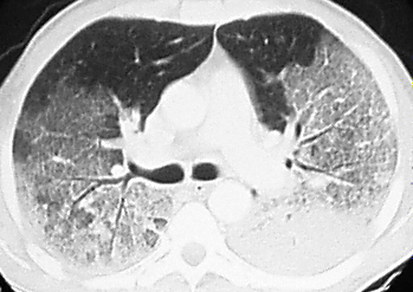Managing dyspnea in the palliative patient.
This comes down to 4 approaches:
Oxygen
Opiates
Benzodiazepenes
Addressing the underlying issue
Other measures of comfort
Oxygen
Several options here with pro's and con's to all
Nasal Cannula
Comfortable at low flows
Limited in how much oxygen it can deliver as it provides no reservoir of oxygen; it depends on the patient's upper airway as the reservoir of oxygen
at high flow rates is uncomfortable and causes dryness and bleeding unless delivered with a humidifier)
Many patients mouth breathe at the end of life
Non-rebreather
provides more oxygen, enables oxygen delivery to mouth breathers
Uncomfortably noisy, must be drawn tightly against the face to be most effective
muffles communication at a time when it is of key importance in the dying patient
Dries patient's mouth and nares out
Venturi Mask
An underutilized therapy
Addresses mouth breathing
Mixes oxygen with room air
Able to provide relatively high flow rates of oxygen
Does not need to be humidified as high flow rates of oxygen are mixed with ambient room air
High-flow nasal cannula
Comfortably provides humidified oxygen at extremely high rates
Does not provide oxygen to mouth breathers
If the patient is being admitted it requires admission to the MICU (or potentially PAMCU)
Non invasive ventilation (Bipap)
Noisy, uncomfortable, frightening
Decreases the ability to commmunicate
Opioids
THE KEY TO PALLIATIVE DYSPNEA
Can be delivered via the subcutaneous route, another underutilized therapy
Administer zofran to offset possible associated nausea
Decrease the intensity of air hunger and dyspnea related anxiety
Have been shown to NOT SHORTEN LIFE IN PALLIATIVE PATIENTS, which is important to communicate to the dying patient's family.
Benzodiazepenes
Anxiety leads to worsening dyspnea; managing the anxiety therefore aids in management of dyspnea
Generally not used as monotherapy, however can be used in addition with opiates in the anxious and dyspneic patient
Other measures
Position the patient as they wish, though generally the more upright patient is the more comfortable patient
Death rattle: As patients lose consciousness they lose their ability to swallow and oral secretions can pool, causing gurgling noises. There is no evidence that this is disturbing to patients, but families often have a very hard time with these noises.
Glycopyrrolate can help mitigate this disturbing noise
Cause specific techniques = address the underlying issue
Must weigh the benefits vs. the discomfort of performing these interventions
Pleural effusions: Thoracentesis
Anemia: Transfusion
Obstructing airway mass: Steroids, palliative radiation if available
Pneumonia: Antibiotics
Fluid overload: Diuresis
Bronchospasm: Bronchodilators
See:
https://first10em.com/palliative-resuscitation-dyspnea/
https://www.rtmagazine.com/products-treatment/monitoring-treatment/therapy-devices/oxygen-administration-best-choice/



